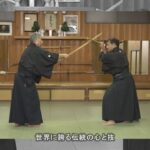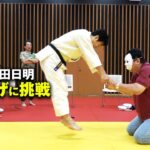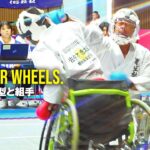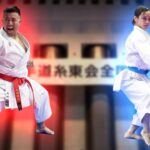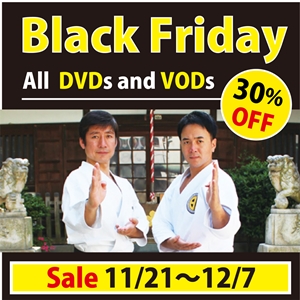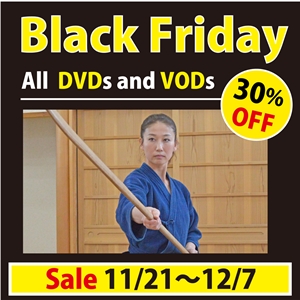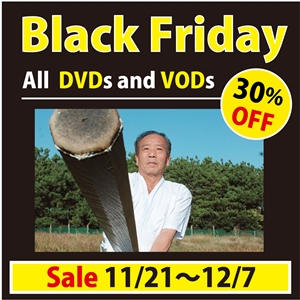Ono-ha Itto-ryu:One sword to rule them all
Text by Grigoris A.Miliaresis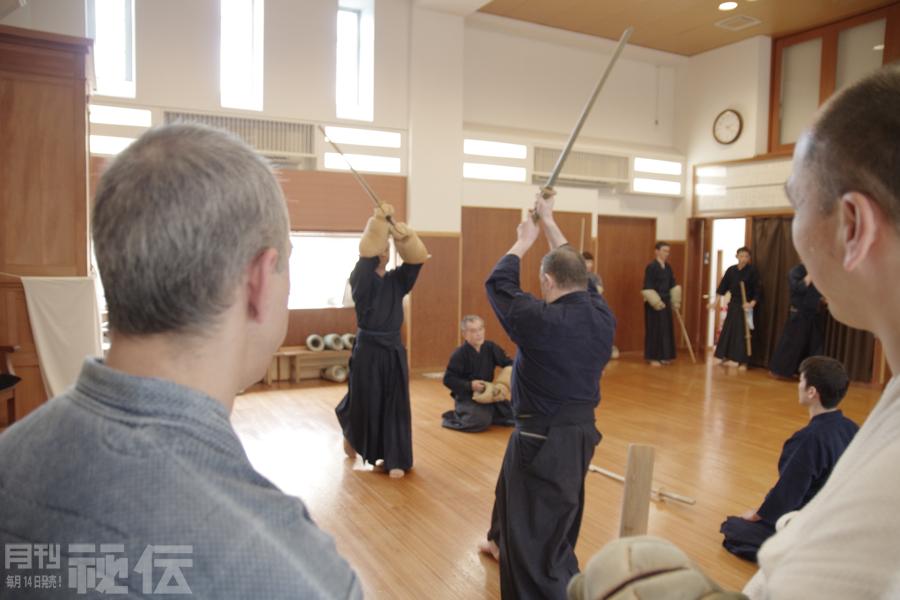
An approach to kenjutsu almost scientific in depth and breadth
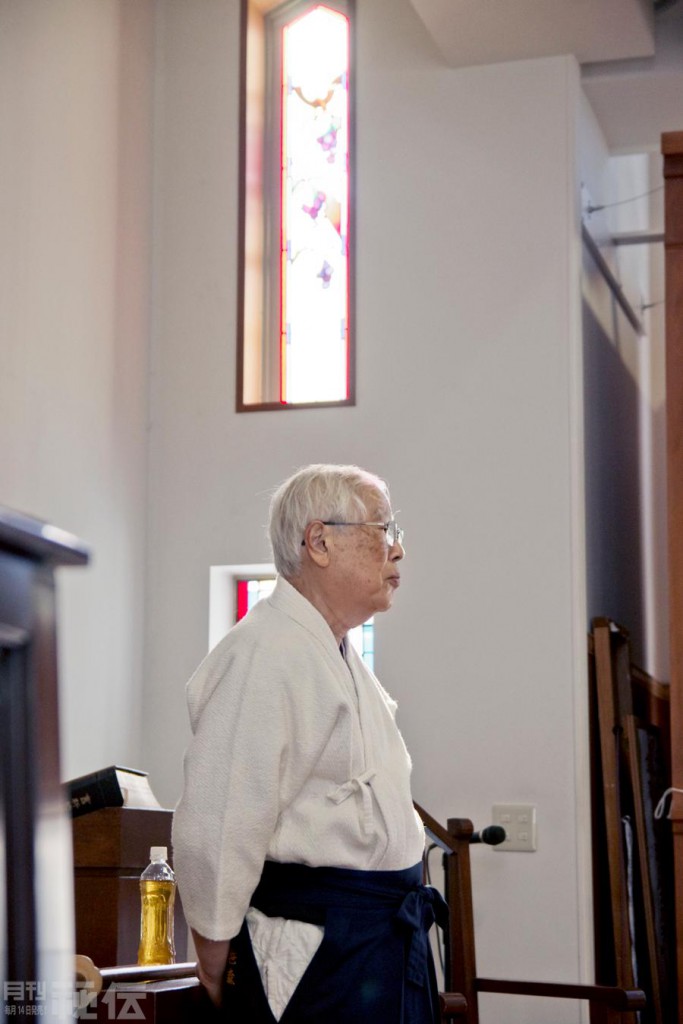 After 30 years in the media business (15 years of which also spent on the Zazen cushion) I pride myself on being a pragmatist: I don’t impress easily and when faced with any situation I like to think that I’m quick to cut through the hype and get to the essence of things. Still, entering the Reigakudo, Ono-ha Itto-ryu’s main dojo in Daizawa, Setagaya was a humbling experience and I’m not sure it could have been otherwise. It’s not about the space, a Methodist church, very modest for someone who has grown up in a country where the Eastern Orthodox Church reigns supreme or the number of the practitioners (although to be fair, for a koryu dojo the turnout was rather impressive). It’s about the sheer tonnage of history behind the Itto-ryu name, a history most contemporary sword arts practitioners are well acquainted with: not very far from where this dojo stands, the school’s second generation headmaster, Tadaaki Ono, was teaching the Tokugawa shoguns –400 years ago! Not being impressed by something like that takes a much better person than me.
After 30 years in the media business (15 years of which also spent on the Zazen cushion) I pride myself on being a pragmatist: I don’t impress easily and when faced with any situation I like to think that I’m quick to cut through the hype and get to the essence of things. Still, entering the Reigakudo, Ono-ha Itto-ryu’s main dojo in Daizawa, Setagaya was a humbling experience and I’m not sure it could have been otherwise. It’s not about the space, a Methodist church, very modest for someone who has grown up in a country where the Eastern Orthodox Church reigns supreme or the number of the practitioners (although to be fair, for a koryu dojo the turnout was rather impressive). It’s about the sheer tonnage of history behind the Itto-ryu name, a history most contemporary sword arts practitioners are well acquainted with: not very far from where this dojo stands, the school’s second generation headmaster, Tadaaki Ono, was teaching the Tokugawa shoguns –400 years ago! Not being impressed by something like that takes a much better person than me.
Of course my visit to the Reigakudo, wasn’t the first time I saw a part of Ono-ha Itto-ryu’s (hereafter “OHIR”) curriculum. The school demonstrates in most major enbu and even if someone doesn’t live in Japan, an Internet search will bring back several results so anyone interested in Japanese swordsmanship will already be familiar with the onigote, the enormous forearm protectors and the fierce kiriotoshi, the technique and concept from which all Itto-ryu techniques start and to which they all end. I’d be lying though if I said that OHIR had fully registered despite the many times I’ve seen its practitioners demonstrate: I always thought that the only way to really “see” the school was to actually participate. And yes, this can be said about anything but it’s particularly true in OHIR’s case. And the reason is that perhaps more than any other classic school, OHIR is a swordsman’s swordsmanship, not a spectator’s.
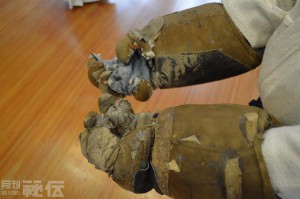
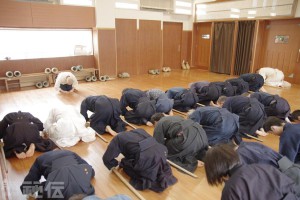
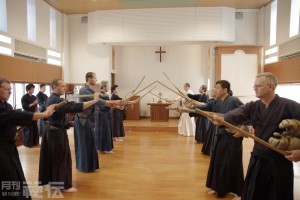
This might sound harsh and unfair to the other schools so let me make myself clear: I don’t mean that the other schools were created for entertainment purposes! Most schools, and especially those created towards the end of the Sengoku and the beginning of the Edo periods, have at their root the very real concerns about life and death of its founder and his successors so there’s no shadow of doubt that they are “real”. What sets OHIR apart though, is the level of sophistication which, as the school’s lore has it, goes back to the days of its founder, sword legend Ito Ittosai Kagehisha. It wouldn’t be an exaggeration to say that the school’s approach is almost scientific in its depth and breadth and its emphasis on even the slightest detail –I’ve been to several koryu dojo and had the opportunity to talk with several practitioners of various schools and I’ve yet to see an approach to swordsmanship as comprehensive as this. And again, this means less for the other schools than it does for Itto-ryu.
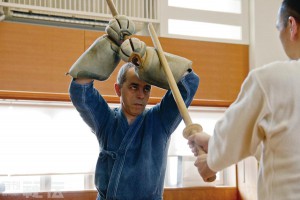 As we did previously with Taisha-ryu, our request to Takemi Sasamori soke was to allow me to participate in a practice in the Reigakudo in the same way I would if I was to enroll; our request was granted but as I found out, this hadn’t to do with us being in the media: the Reigakudo is among the schools that allow people interested in them to actually try their hand before joining. This is against the stereotype that wants koryu to be secretive but OHIR has been this way for at least 50 years: the previous soke, statesman, educator and father of present-day soke, Junzo Sasamori (1886-1976) famously published in 1965 a book titled “Itto-ryu Gokui” which is a comprehensive manual of the school. According to Takemi Sasamori soke, his idea was that people who are interested in OHIR should be encouraged to see it and learn about it before they make the decision to join. As for the inevitable question regarding letting outsiders in on the secrets of OHIR, the answer is the same often expressed from koryu teachers: learning about the secrets is not the same as actually learning them and this only comes after years of practicing under a licensed instructor.
As we did previously with Taisha-ryu, our request to Takemi Sasamori soke was to allow me to participate in a practice in the Reigakudo in the same way I would if I was to enroll; our request was granted but as I found out, this hadn’t to do with us being in the media: the Reigakudo is among the schools that allow people interested in them to actually try their hand before joining. This is against the stereotype that wants koryu to be secretive but OHIR has been this way for at least 50 years: the previous soke, statesman, educator and father of present-day soke, Junzo Sasamori (1886-1976) famously published in 1965 a book titled “Itto-ryu Gokui” which is a comprehensive manual of the school. According to Takemi Sasamori soke, his idea was that people who are interested in OHIR should be encouraged to see it and learn about it before they make the decision to join. As for the inevitable question regarding letting outsiders in on the secrets of OHIR, the answer is the same often expressed from koryu teachers: learning about the secrets is not the same as actually learning them and this only comes after years of practicing under a licensed instructor.
Kiriotoshi: a technique and concept illustrating Ittosai’s and Ono’s ideas about conflict
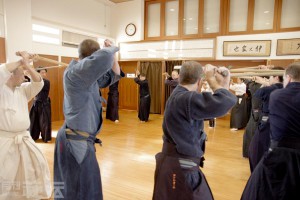 The first part of my introduction to OHIR was taken care of by one such instructor, Hideyuki Kaiwa. In Reigakudo’s lobby, Kaiwa sensei explained in detail the school’s etiquette and the “Kake-kyuhin no Kamae”, the nine stances that make its core techniques –the standard four (jodan, seigan, gedan and wakigamae) as well as the other five that are more specific to OHIR, the poetically named in, yo, kasumi, hongaku and the literally named onken, a variation of wakigamae where the sword gets hidden behind the swordsman’s body so the opponent can’t see it. Kaiwa sensei’s explanations were filled with details about the placement of hands, feet, body and sword in the ideal form of the kamae as well as in variations that occur during the kata and, consequently in an actual fight; incidentally, these explanations were the first indication that OHIR’s first and foremost concerns are practicality, functionality and efficiency.
The first part of my introduction to OHIR was taken care of by one such instructor, Hideyuki Kaiwa. In Reigakudo’s lobby, Kaiwa sensei explained in detail the school’s etiquette and the “Kake-kyuhin no Kamae”, the nine stances that make its core techniques –the standard four (jodan, seigan, gedan and wakigamae) as well as the other five that are more specific to OHIR, the poetically named in, yo, kasumi, hongaku and the literally named onken, a variation of wakigamae where the sword gets hidden behind the swordsman’s body so the opponent can’t see it. Kaiwa sensei’s explanations were filled with details about the placement of hands, feet, body and sword in the ideal form of the kamae as well as in variations that occur during the kata and, consequently in an actual fight; incidentally, these explanations were the first indication that OHIR’s first and foremost concerns are practicality, functionality and efficiency.
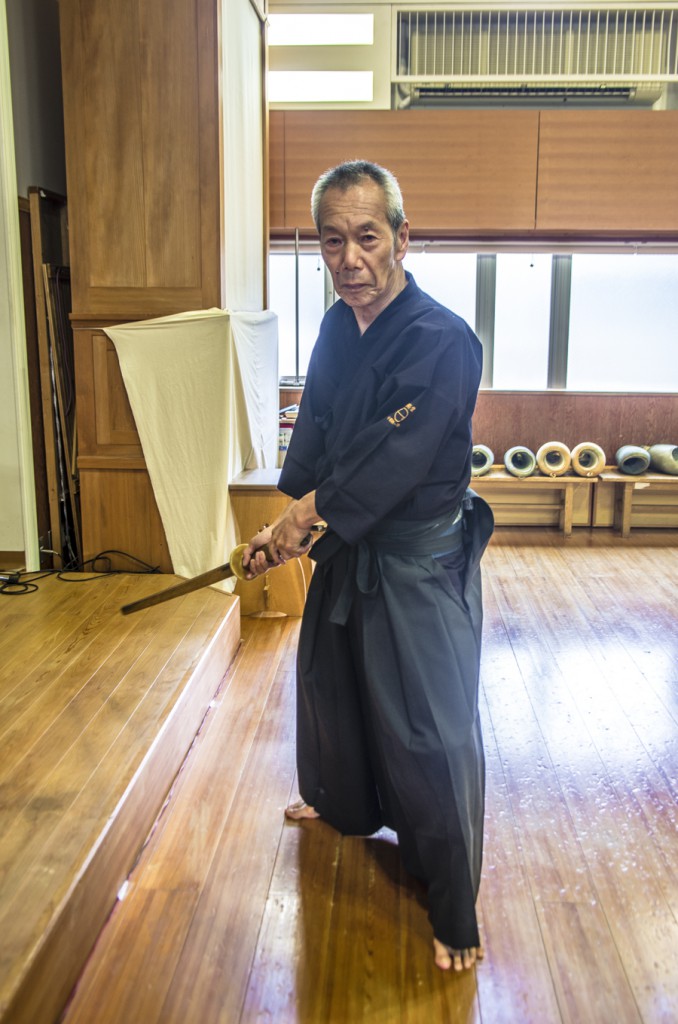
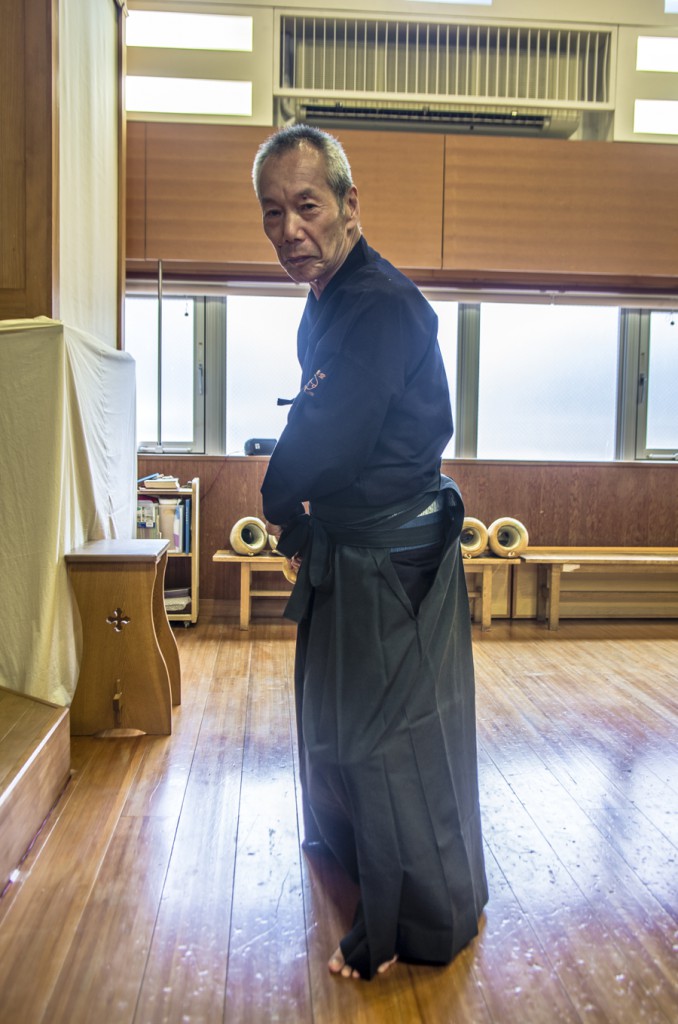
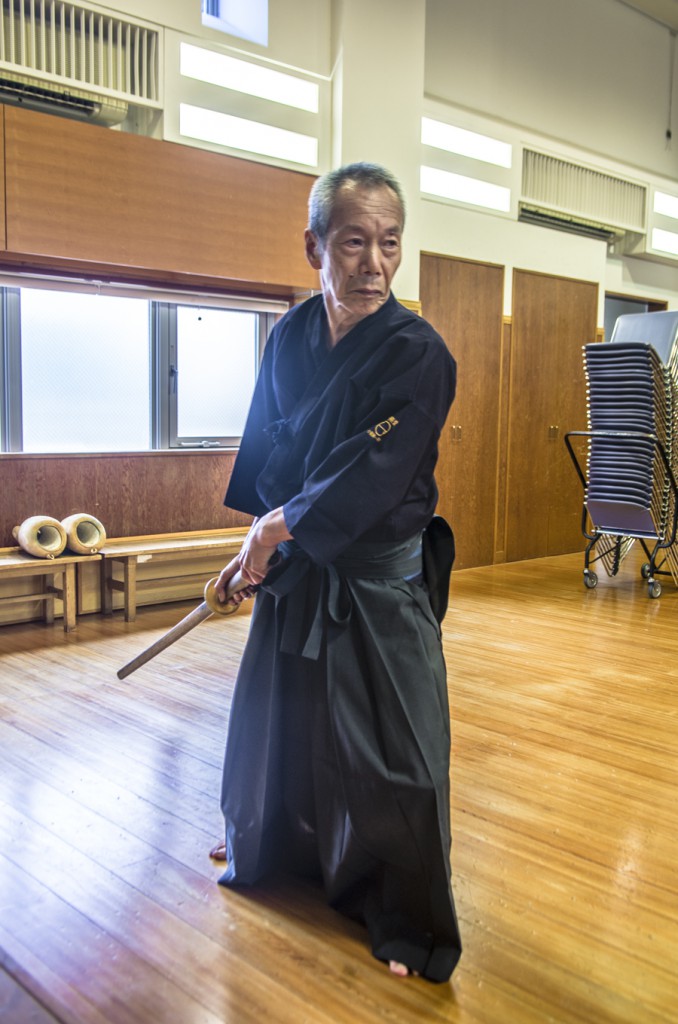
After Kaiwa sensei’s private lesson was over it was time to move into the main training area and join the Reigakudo’s members in many, many repetitions of kiriotoshi, OHIR’s trademark technique and concept. The sequence of kiriotoshi is deceptively simple: starting at six paces, the two opponents approach each other and then the uchikata attacks with an overhead downwards cut. Shikata cuts, seemingly at the same time but actually a second later, deflects uchikata’s sword and pushes towards their neck. Uchikata retreats and raises their hand to jodan, bringing the onigote gauntlet above their head, and shikata cuts for a second time, on the onigote standing in for uchikata’s head; after that, they disengage, return to their initial places and go at it again.

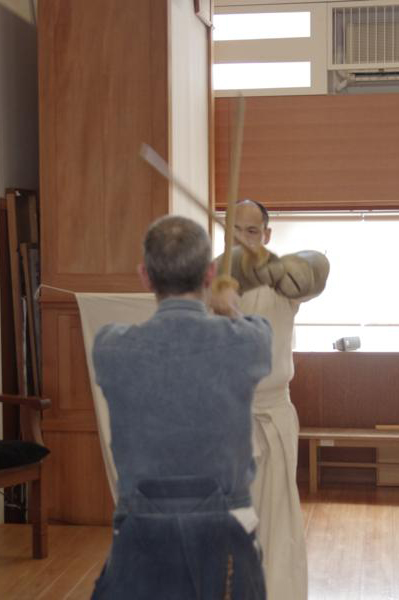
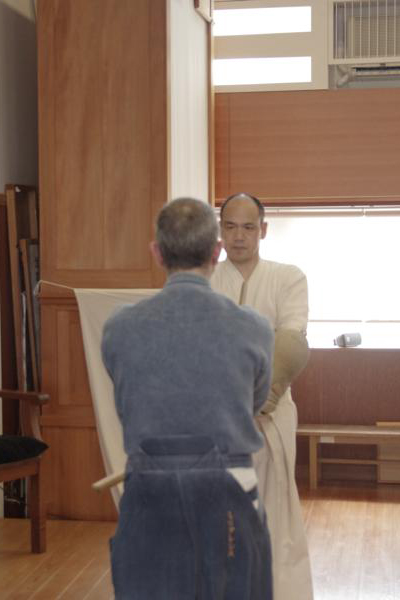
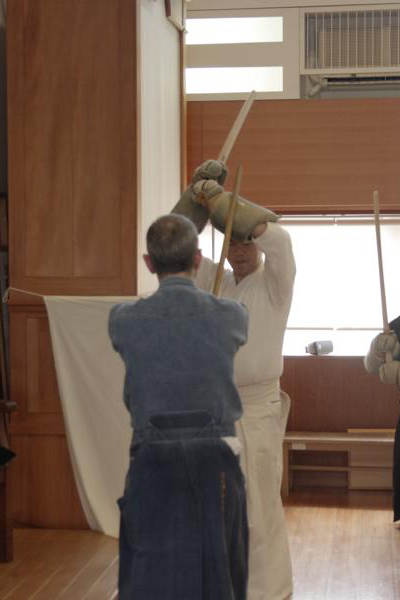
And again, and again, with the (by definition, senior) uchikata doing slight variations in timing and distance and with the group-leader rotating the group so all practitioners get to do the kiriotoshi as many times as possible. And when the basic kiriotoshi is over, there is the faster triple-kiriotoshi where there’s no second cut on the onigote but three deflections with shikata’s sword tip ending on uchikata’s belly, throat and forehead and the even faster quintuple-kiriotoshi which is the same with the triple but with two more targets (solar plexus and crown of the head) added in. When the kiriotoshi is over, the actual practice starts and each senior takes a junior and work on the school’s kata set, starting from the Odachi, the first set of fifty plus ten kumitachi were both opponents are armed with a long sword. As for the first kata, called “ipponme” (“first”) or “hitotsu-gachi” (one victory) it is the exact same kiriotoshi everyone practiced for a few dozen repetitions right before!
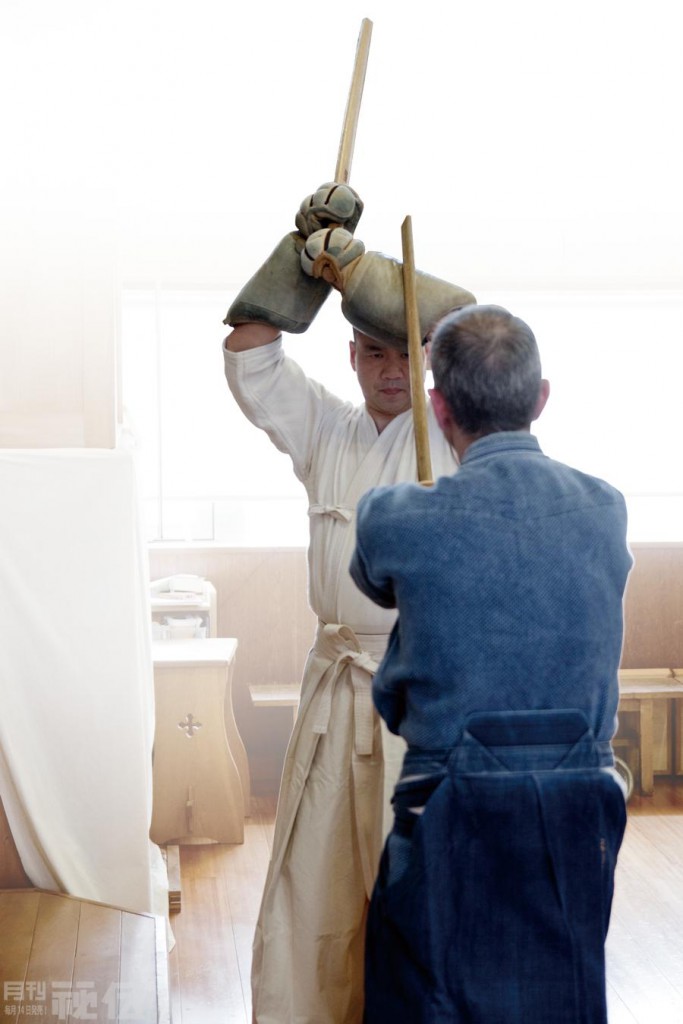 The idea that everything worthwhile in a koryu (or any martial art for that matter) is hidden in its first and most basic kata is not limited to OHIR: I’ve heard it in pretty much everything I’ve trained in or have discussed with practitioners of other arts. I believe though that in OHIR’s case it might be true in a more literal way since the kiriotoshi is both a technique and a concept, or rather a series of concepts, that make up Ittosai’s and Ono’s ideas about conflict; concepts in this case are technical (like “sharin zenten” the forward-rolling wheel which refers to the placement of force during movement guaranteeing that the opponent’s sword will get “swallowed” by your sword), mental (like “chushin chokunyu”, i.e. entering the opponent’s center –and yes, as I mentioned before, the mental aspects in OHIR are also practical) and tactical (like “itto sunawachi banto”, the one sword/technique that could transform into countless others). I doubt there is anything important in OHIR that can’t be found in this first kata.
The idea that everything worthwhile in a koryu (or any martial art for that matter) is hidden in its first and most basic kata is not limited to OHIR: I’ve heard it in pretty much everything I’ve trained in or have discussed with practitioners of other arts. I believe though that in OHIR’s case it might be true in a more literal way since the kiriotoshi is both a technique and a concept, or rather a series of concepts, that make up Ittosai’s and Ono’s ideas about conflict; concepts in this case are technical (like “sharin zenten” the forward-rolling wheel which refers to the placement of force during movement guaranteeing that the opponent’s sword will get “swallowed” by your sword), mental (like “chushin chokunyu”, i.e. entering the opponent’s center –and yes, as I mentioned before, the mental aspects in OHIR are also practical) and tactical (like “itto sunawachi banto”, the one sword/technique that could transform into countless others). I doubt there is anything important in OHIR that can’t be found in this first kata.
OHIR’s soke is without a doubt one of the most knowledgeable people in the koryu world today
For this first kata, as well as for the next four (Mukae-tsuki, Tsubawari, Gedan no Kasumi, Wakigamae no Tsuke) I was honored and fortunate to not only have as my partners Yuji Yabuki and Mark Hague, both accomplished instructors and very well versed in OHIR’s subtleties but to train in the first “slot” of the dojo (i.e. the spot closest to where soke usually sits) which meant that my training was done under the direct supervision of Sasamori soke. As the reader can imagine, this was an education in itself since OHIR’s 17th soke is without a doubt one of the most knowledgeable people in the koryu world today: besides OHIR which he learned literally at his father’s knee, he’s also the soke of Shinmuso Hayashizaki-ryu, one of the few schools practicing the enormous nodachi sword and the only one I’ve seen practicing batto and at a very close range with it and of Chokugen-ryu Onaginata Jutsu, a school using what is probably the biggest naginata I have seen. But more than that, his timing is perhaps the best I’ve seen in any martial artist.
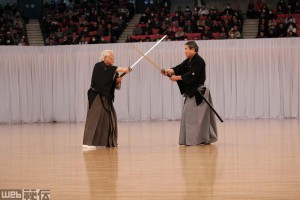
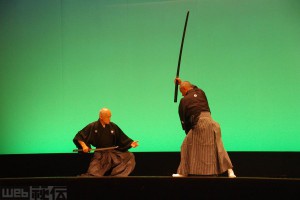
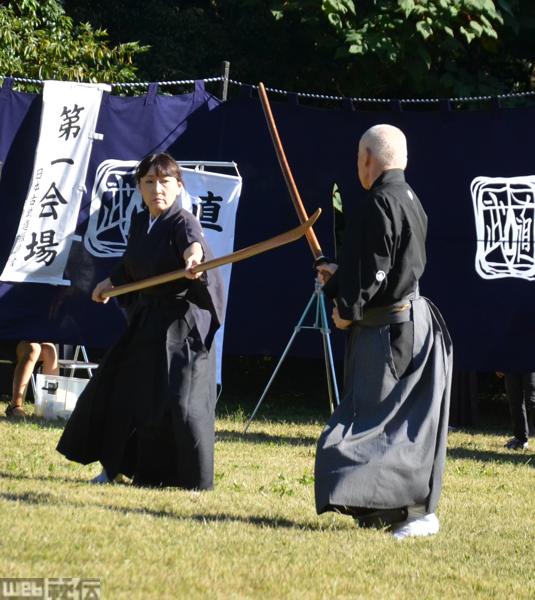
Itto-ryu’s kiriotoshi is formidable but its tsuki (thrust) is also formidable
Going back to the first five kata, they expose the OHIR practitioner to a variety of situations; what I found particularly interesting was that the second kata (i.e. the second thing the student of the school learns) is the study of a thrust to the solar plexus which counteracts an attack that is also a thrust to the solar plexus. The reason I say I find it interesting is because it’s an indication of the importance the school places on a use of the Japanese sword that many think of as secondary, focusing on its superb cutting edge. In the words of Sasamori soke, Itto-ryu’s kiriotoshi is formidable but its tsuki (i.e. thrust) is also formidable; what’s even more interesting is that the technique of the thrust in terms of body mechanics, leveraging etc. is completely different from what I’ve seen anywhere else. And for what it’s worth, the execution of this thrust (which is performed against a thrust from the opponent) is another implementation of the kiriotoshi principle and the domination of the center line.
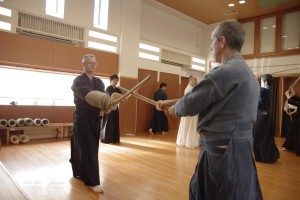
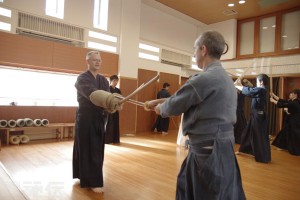
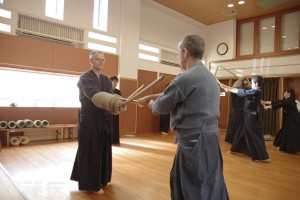
Reigakudo dojo is always full of people and always bustling with energy
Moving on to the third, fourth and fifth kata, the technical nuances multiply without the situations involving the two opponents becoming extremely long or complicated. This is another interesting point and highlights even more the Itto-ryu approach to swordsmanship: contrary to other schools, most of OHIR’s kata are rather short and simple. In fact sometimes they are so short and simple that I’ve heard people wondering if some essentials were lost along the centuries. Of course this is a rather simplistic approach: even though the matter of transmission errors/shortfalls is indeed a concern for any tradition (and not just those related to the bugei), even a cursory glance at OHIR’s full curriculum is enough to realize that the reason the kata are small and simple is because they are building blocks in the same way the letters of the alphabet are building blocks of a language: if as adults we re-examine the way we learned to speak and write we’ll see that each of those drills we did in the first grades of elementary school, simple as it might have been, has helped in our fluency in the language later.

This is also confirmed by OHIR’s lore: allegedly the 50 kata of the odachi set, are a breakdown analysis of a five-kata set, the Kojo Gokui Goten which was taught to Ito Ittosai by Kanemaki Jissai of Chujo-ryu and Kanemaki-ryu. Essentially, with the Odachi set the student learns the alphabet and when they get to the Goten they use the letters they have learned to form sentences and communicate; to me this is yet another proof of the serious thought that has been put behind the creation of the school’s curriculum and the preparation of its exponent for any kind of eventuality. As I wrote in the beginning of the article, this is as close as a 400-year old tradition could get to a scientific examination of sword-fighting and it is no wonder that this land’s most demanding students, the Tokugawa shoguns saw in Itto-ryu something worth studying.
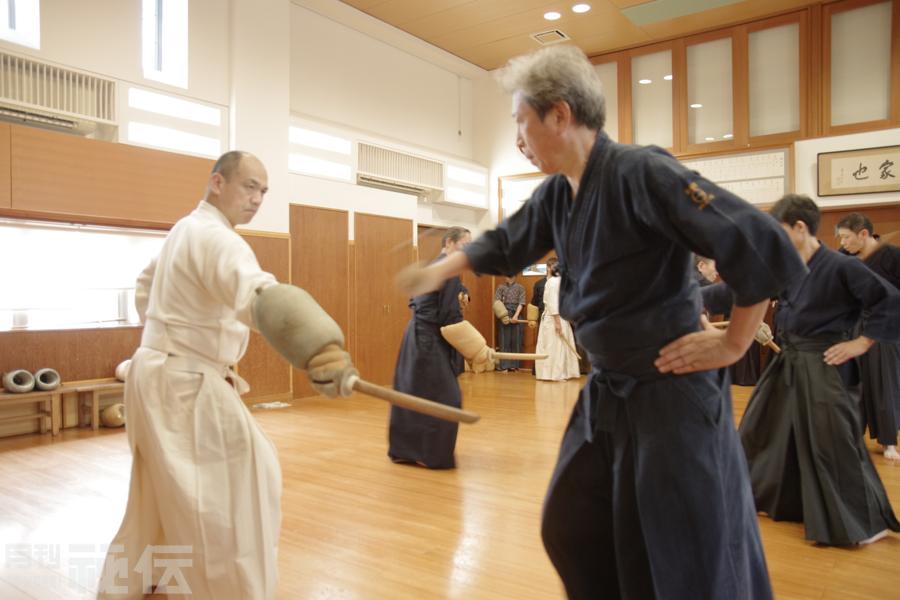 Apparently people still think so: from kendoka wanting to make their kendo more substantial to aikidoka exploring their art’s founder’s past (Morihei Ueshiba’s teacher Sokaku Takeda had studied OHIR) to koryu bugei maniacs to people with no martial arts’ experience at all, the Reigakudo is always full and always bustling with energy. Seniors of all levels help their juniors with advice, suggestions and corrections all under the supervision of Sasamori soke, the school’s living connection to its past and a genial host ready to offer his knowledge to everyone in the spirit of his father’s admonition that the teacher should care for their students and sympathize with them. The spirit and energy in the OHIR dojo were contagious and I’m convinced that this, together with the school’s history and its methodology that remains relevant to this day have allowed it to continue thriving in Japan and abroad.
Apparently people still think so: from kendoka wanting to make their kendo more substantial to aikidoka exploring their art’s founder’s past (Morihei Ueshiba’s teacher Sokaku Takeda had studied OHIR) to koryu bugei maniacs to people with no martial arts’ experience at all, the Reigakudo is always full and always bustling with energy. Seniors of all levels help their juniors with advice, suggestions and corrections all under the supervision of Sasamori soke, the school’s living connection to its past and a genial host ready to offer his knowledge to everyone in the spirit of his father’s admonition that the teacher should care for their students and sympathize with them. The spirit and energy in the OHIR dojo were contagious and I’m convinced that this, together with the school’s history and its methodology that remains relevant to this day have allowed it to continue thriving in Japan and abroad.
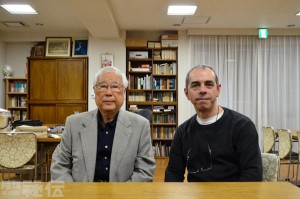 PS
I would like to personally thank Sasamori soke as well as Kaiwa and Yabuki sensei and Mark Hague for their help during my visits to the Reigakudo dojo, both on and off the practice floor. Their advice and insights were instrumental in understanding some of OHIR’s teachings on the physical as well as the intellectual level; I’m further grateful and indebted to them for offering this assistance at the expense of their own training. Last but not least, I would like to thank the rest of the Reigakudo members who tolerated our presence during their practice: I know from personal experience that distractions are not welcome when practicing these arts and I sincerely hope that our intrusion was kept as small as possible.
PS
I would like to personally thank Sasamori soke as well as Kaiwa and Yabuki sensei and Mark Hague for their help during my visits to the Reigakudo dojo, both on and off the practice floor. Their advice and insights were instrumental in understanding some of OHIR’s teachings on the physical as well as the intellectual level; I’m further grateful and indebted to them for offering this assistance at the expense of their own training. Last but not least, I would like to thank the rest of the Reigakudo members who tolerated our presence during their practice: I know from personal experience that distractions are not welcome when practicing these arts and I sincerely hope that our intrusion was kept as small as possible.
──The Hiden Budo and Bujutsu Magazine,
September 2016
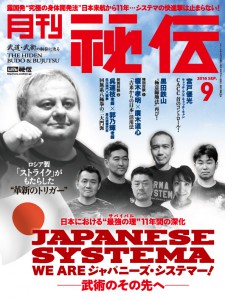
Related article:Ono-ha Itto-ryu’s “kiriotoshi”: An “invincible” technique, born in the battlefield
Related article:Ono-ha Itto-ryu’s Takemi Sasamori: A tribute from abroad
Related article:Principles of Budo: Ono-ha Ittō-ryū
 About the author
About the author
Grigoris Miliaresis has been practicing Japanese martial arts since 1986. He has dan grades in judo, aikido and iaido and has translated in Greek over 30 martial arts’ books including Jigoro Kano’s “Kodokan Judo”, Yagyu Munenori’s “The Life-Giving Sword”, Miyamoto Musashi’s “Book of Five Rings”, Takuan Shoho’s “The Unfettered Mind” and Donn Draeger’s “Martial Arts and Ways of Japan” trilogy. Since 2007 his practice has been exclusively in classic schools: Tenshin Buko-ryu Heiho under Ellis Amdur in Greece and Kent Sorensen in Japan and, since 2016, Ono-ha Itto-ryu under 17th headmaster Sasamori Takemi and 18th headmaster Yabuki Yuji.
http://about.me/grigorismiliaresis






